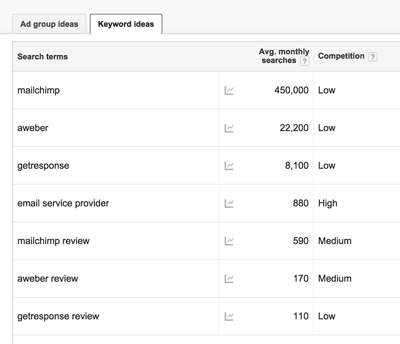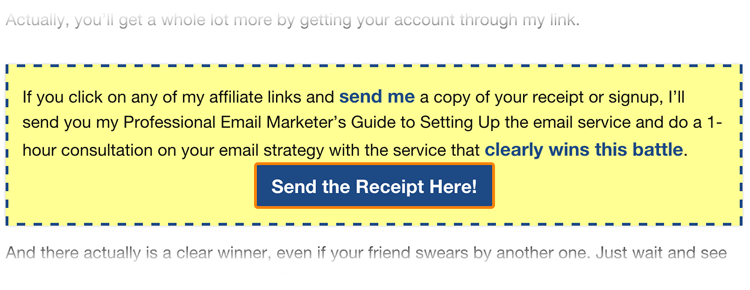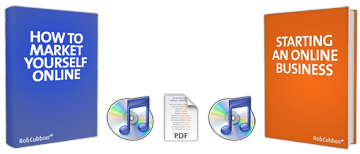Have a website but you aren’t making money with affiliate sales? Your content isn’t getting seen thanks to a crowded market? Product comparison blog posts could be your salvation.

That’s okay, because you aren’t alone. Many bloggers toil away trying to write epic content but never seem to get traffic or make passive income.
 This post is a guest post from Dave Chesson. As you may know, guest posts on this blog are as rare as snowflakes in summer, so this is totally worth reading.
This post is a guest post from Dave Chesson. As you may know, guest posts on this blog are as rare as snowflakes in summer, so this is totally worth reading.
Dave has been making a passive income of $5000+/month for some time due to his mastery of Amazon’s Kindle algorithm. He’s only written (or had ghost-written) five books and yet makes this life-changing amount of money in his spare time as he also works a full time job.
What if I were to tell you that there was one simple type of post that can not only increase traffic, but can also make you passive income? Interested? It’s all about comparing products and not reviewing them.
In this article, I’m going to show you the following:
- The four phases to a buyer’s decision
- Why it’s easier to get the customer’s attention by comparing products
- Exactly how you can capitalize with product comparison
- How you can increase your sales
The Customer Buyer Cycle
There are four basic stages to the Customer Buyer Cycle:
- Problem Recognition: the customer becomes aware of the fact that they need a particular product.
- Product Information Search: the customer begins a journey of looking for more information on potential products narrowing their search as they go.
- Product Comparison: they now need to check out all the potential products so as to make a decision on the best one.
- Product Purchase: they buy the best product.
So, which stage of the Customer Buyer Cycle do you think is the best to get a sale? If you guessed “Product Comparison” then you would be correct!
However, most bloggers and affiliate sales professionals focus on stages 1 and 2, and miss out on the best sales conversion post of them all: the product comparison post.
Why product comparison blog posts get more traffic
As you can imagine, the third stage of a buyer is extremely important. As people do their research, what they type into Google will become more and more specific and thus less competitive.
So as to give you an example, we’ll take a look at Email Service Providers. In the first stage, someone realizes that they need email marketing to improve their business.
Next, they’ll move into stage two where they will begin their initial research phase and typing in general search terms into Google, like “email service provider” or “aweber”.
Let’s examine these phrases more closely – we want to look at two factors.
- how many searches per month they get on Google
- their competitiveness – how easy is it to rank on the first page of Google for these phrases
We all know how to find out how popular a keyphrase is – Google’s Keyword Planner will tell us that.

But how do we find out the competitiveness? This can be done with a premium tool: LongTail Pro (affiliate link). The Platinum version of this tool gives you a keyword’s competitiveness score from 1 to 100 – with 1 being easiest to rank for and 100 beingridiculously high and impossible to rank for.
| Keyword/Keyphrase | Searches per month | Competitiveness |
|---|---|---|
| email service provider | 880 | 51 |
| aweber | 22,200 | 63 |
| aweber review | 590 | 54 |
| mailchimp | 450,000 | 72 |
| mailchimp review | 590 | 34 |
| getresponse | 8,100 | 60 |
| getresponse review | 110 | 30 |
For the competitiveness number, generated using LongTail Pro, I’ve found that 25 and below usually means that minimal SEO expertise is needed in order to rank for that term. You don’t have to be a Search Engine Optimization (SEO) master to rank for terms with a score of 25 or less.
Back to our buyers on their Customer Buyer Cycle. This might also be the point where they will look for some top-notch training on how to setup an email service so that they can feel confident about the upcoming purchase.
After having read up on some of that, the next phase will be the third phase, to start looking for comparison of the services so they will type in keyphrases like:
| Keyword/Keyphrase | Searches per month | Competitiveness |
|---|---|---|
| best email service provider | 110 | 32 |
| aweber vs mailchimp | 880 | 29 |
| mailchimp vs aweber | 390 | 27 |
| aweber vs mailchimp vs getresponse | 10 | 20 |

Notice that these still get a decent amount of traffic, but aren’t very hard to rank for … in terms of competition.
Starting see how your comparison article can get you more traffic without you having to be an SEO expert?
Creating a strong product comparison blog post
Okay, so now you have an idea of the type of post to write, but how exactly do you write a good comparison post.
The best product comparison posts include the following:
- A reason why you chose those particular products or services
- Legitimacy in yourself as someone who they should listen to, like “I’ve used all three of these”.
- Easy to scan information that holds all of the pain points of the customer
- Extra Points: A chart that breaks down all the information so that the customer doesn’t have to look further.
- A clear winner for them to rally behind.
Using the example above on the best email service providers, here’s an article I wrote that is aptly named Aweber vs. MailChimp vs. GetResponse. I’m sure you can tell which two keywords I was targeting.
Simply put, right form the title, you know I’m comparing three services. As someone who used all three services, I’ve got a legitimate foundation in which to compare them. As you quickly skim through the article, you can see pain points written in the subject headers, and a nicely put together chart that does a side-by-side comparison.
Heck, you don’t even need to read the article to know which one I support and can easily glean from the chart why that is.
But there is one special thing that I do that helps to double my conversion.
Secret sauce to making product conversions
Did you, by any chance, notice my yellow boxes in the article (see above)? If not, no big deal, but if you did read them, you would see I offered a product upgrade.
What are those? They are a simple addition that helps ensure your reader will click on your link. The the example above, I offered to anyone who used my affiliate link, the ability to
It doesn’t have to be a big product
Product comparisons don’t have to be centered on large products or services like email service providers or hosting providers. They can focus on simple things like books.
You can do it: What product comparison blog posts will you write?
As you can see, product comparison posts can easily get more views and better conversions. They are less competitive, and thus allow your post a better chance of being found by random “ready to buy” customers.
So, what will you compare on your website? Let us know below and if you have a product comparison article, go ahead and drop it in the comments below. Rob and I will make sure to check it out and give some input.


Thanks for the great tips Dave and thanks Rob for sharing.
I will give it a go and let you know.
Awesome Andy. Yeah, I find it easier to get the sale when you start at the point where the person is just about ready to make the purchase. Post here once your article is up!
Wow. This is great stuff Dave. Thanks Rob for giving us this great post. This is very informative and very practical. I could use this idea. I will be doing this on a few ideas that I have in mind.
Thank you both very much. Always a pleasure to come here and learn so much. AWESOME.
Rene
Awesome Rene! Make sure that once you write one of those, post it here!
This is an Amazing Stuff buddy! fully Pack of learning about blog comparison. I will apply and let you know more about it. 🙂 <3
Awesome Avenue. Once you do, come back and drop a link the comments on your comparison!
Thanks for the article. Very interesting reading (I’m in the “priming myself” phase of becoming an entrepreneur.
By the way – check out the subheading above “It doesn’t have to big a big product”. Think hat you might need to make a small correction.
Cheers!
Awesome….I remember that phase and we’ll get that update in. Thanks!
Already updated! 🙂 Thanks, Mark.
Thanks for the precious tips Dave and thanks Rob for sharing. As I’m contemplating to embrace articles writing, I’ll definitely give it a shot for a kick-start. Honestly, it never crossed my mind to write about product comparison blog posts. I always learn something new here!
Cheers
Great to hear Ehsaan! Yeah, I’m a big fan of the site as well. I’ve been following Rob’s work for years.
Hi Dave,
It’s good to see you here at Rob’s blog…the work you’ve been doing with KindlePreneur is so awesome…I must give you all five stars in review 🙂
Back to the post here: I completely agree that product comparisons convert better – and appear less pushy since their general tone is one of genuine help and not that of a sleazy salesman trying to close a sale.
Recently, I have decided to go right into affiliate marketing on a full time scale and I cannot thank you enough for this awesome tip that will surely garner more sales.
Rob, thanks for accepting to publish this; Dave, as always, you are a superior writer.
You two, make the day great!
Always,
Akaahan Terungwa
Wow Akaahan…that is one of the coolest things I’ve read. Thanks man, totally made my day. How does one respond to that? Anyways, I am totally with you on that. I naturally don’t have a predilection to affiliate sales. But using comparisons, like you said, helps to give value….value more so than just a review. So, again…I’m with you on that! Cheers and rock out those product comparisons 😉
Hey Dave, How are you? Great article I found your post in Viral content buzz. Just want to say you got a very incredible blog about blog post. I will for sure remember your words and tips too. Thank you. Im looking forward to keep in touch to you.